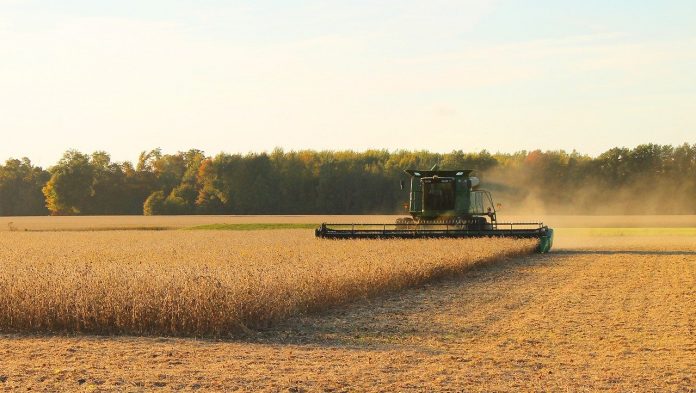Most years, corn and soybean prices find a low just before harvest, during harvest or after harvest. The low comes early in years that we are anticipating a big harvest and no extra demand to use it up. The low comes during harvest when enough acres are harvested to make observers confident of the crop size. The low comes after harvest when the market is surprised by extra bushels or the farmers have not moved enough of the crop to the elevator system.
Of course, the real surprises sometime come way before harvest. In a year of wet spring and late planting, great summer weather can yield a crop bigger than expected after low prices in early spring become better prices as wet weather that slows development inspires traders to bid the price up. In a year of great early weather, the price may be discounted early, then go higher as later problems prove that the crop is overestimated.
So, what do we have this year?
2023 prices
In the East, we were blessed with adequate rainfall, even if some was just in time. Farther west the farmers were scared by dry weather until the middle of June. Then, timely rains came in most of the Corn Belt, and the predictions of some farmers I talk to went from 70 bpa to 170 bpa almost overnight. In fact, the crop was hurt in fairly large areas but generally looked so good that official USDA estimates only cut the yield by a few bushels from the initial thoughts of a record yield and a record crop in total.
Also, in June, USDA reported that they had been way off in yields. We had fewer acres of corn and more of soybeans than we thought. This had a very short effect on the prices, helping the soybeans but not the corn. In a couple of days, we went back to trading as if the new acreage reports had never happened.
Harvest progress
Now we are into harvest in much of the Corn Belt, but with not a lot done. USDA puts the bean harvest on Sunday night at just 22 percent for the nation as a whole, just shy of the 23 percent five-year average. Ohio is at 15 percent normally, but only seven this year. Farmers I have talked to in northeast Ohio said Monday that they would be able to start beans by Thursday, but rain was forecast. There has been no frost, and there are patches of green beans. In Ohio, we cut the beans first, if the weather holds. Some people will keep switching bean and corn heads if there is intermittent rain on some days, but this early we hope for good weather and wait for the corn, especially, because it looks drier than it actually is this time of year.
Quarterly Grain Stocks Report
Friday USDA released the Quarterly Grain Stocks Report. Traders had hoped for some bullish news since grain prices have been so soft lately, but there was little to get excited about. The corn stocks were lower than expected, which means the usage has been better than predicted. Usage had been thought to be slow because of so-so exports, little ethanol growth and reduced cattle numbers. However, the market seemed to focus on the idea that last year we had a small crop, and that was why the grain stocks were lower than normal.
With December corn futures trading below five dollars, we would like to think that, if the report gave us bearish news and the market was not lower on Monday, maybe we are seeing the harvest low. It is too early to tell, but that would be good news. It would also fit with the above theoretical guess about the harvest low. However, my history is to predict the harvest low too early, so I am still waiting for a surprise in average yields.
The surprise so far came in USDA’s estimate of soybean stocks, which is the lowest in two years. This came even though our exports have lagged estimates, we expect good usage of this new crop, partly because of the expected crop size this fall being lower than normal. Add to this the pace of crush plant expansion. We have talked for a couple of years about the growth of soy diesel and even soy-based jet fuel. This domestic usage growth will be showing up this year. I would still expect that the price low is not in for the beans until we get half or two-thirds of the crop harvested.
A lot of the soybeans need to go down the river, and as we discussed in this space last week, the Mississippi River system is not cooperating. We are at historic low levels for the river, and there is no reason to believe that changes. Lower water means under-loading barges so they do not ground in the most shallow water. Under-loading barges means greater freight costs and shortages of barges. That can lead to full elevators on the upper Mississippi, elevators that need to turn the inventory several times to stay open for receipts. If they fill up, the country elevators fill up. And, of course, all these problems come out of the farmer in the form of a wider basis to the futures.
Current prices
Looking at the prices, December corn futures are trading this Monday night, as this is written, at $4.85-3/4. The high was three months ago, at $6.29-3/4. (Dear Lord, please give me $6 corn again, and I promise I will really sell some this time …)
November soybean futures are trading tonight at $12.70-3/4. Compare that to the $14.35 we had a little more than two months ago. On Friday, we closed at $12.75, with a low at $12.72-1/2. So, no progress after the weekend with the soybeans.
The worst commodity chart has to be the Chicago wheat. The December futures are trading at $5.64-3/4. We actually had a low on Sept. 29 at $5.40, and have rebounded a little. The wheat chart has a couple of large cycles, then a mostly down trade from July 25 at $7.96-1/4 to the $5.40 of Sept. 29.
It is hard to reconcile this low price with the fact that Ukraine has wheat production problems and shipment problems. The Russians have been rocketing the port facilities, and a couple of brave shippers have loaded vessels without any Russian Black Sea agreement on safe shipping to guarantee passage. Insurers renew special war-time insurance riders each week at tens of thousands of dollars per ship.













